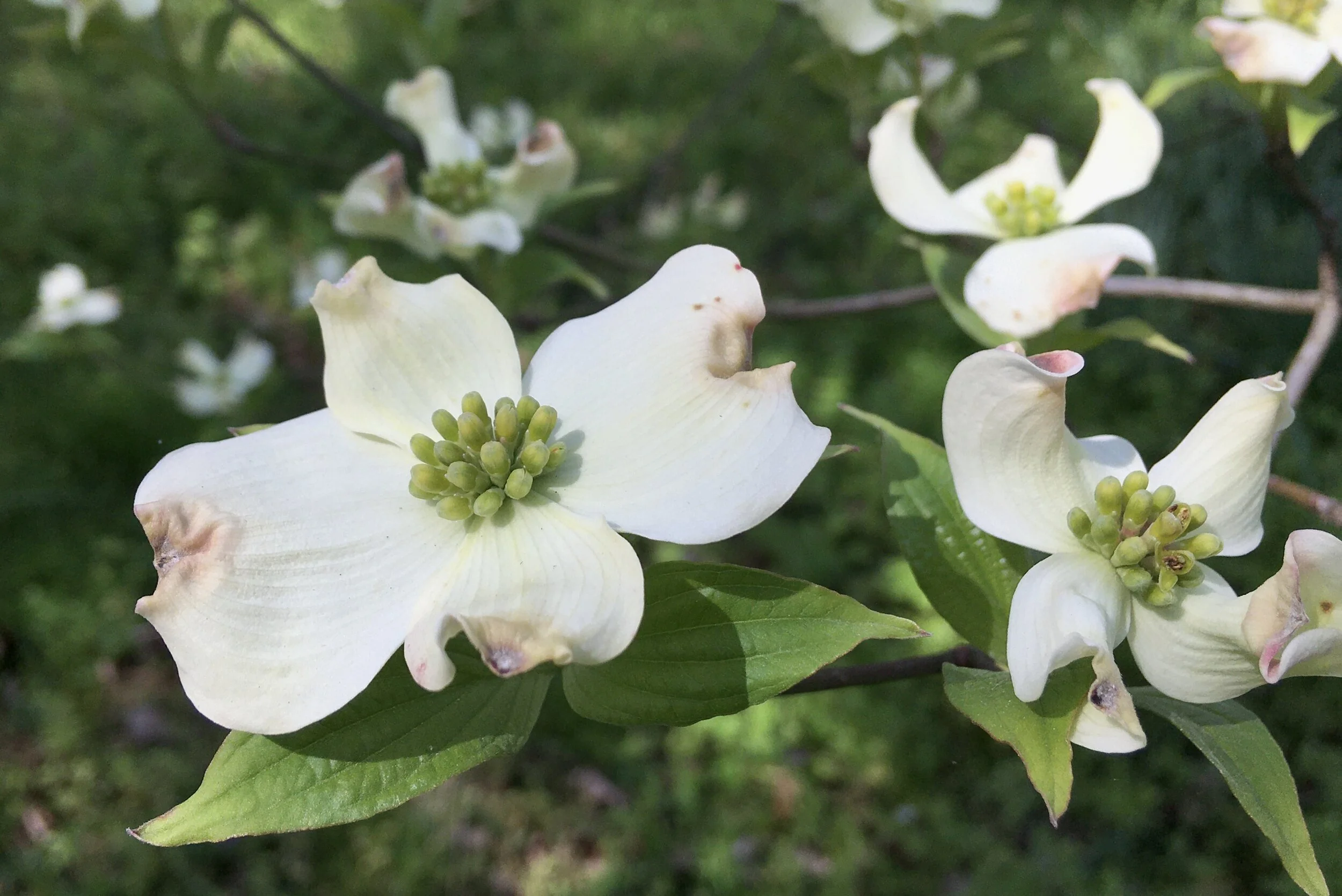Going Native
Need a New Tree? Choose a Native
By Joanna Brichetto
Tennessee Naturalist
SidewalkNature.com
If you’re planning to plant a tree this fall or winter – consider native species. Not just because natives are beautiful and can deal with Nashville soils and seasons, but because they feed our food web.
If you want birds, bees and butterflies, plant native.
If you want to boost biodiversity, plant native.
If you want a healthy ecosystem, plant native.
Blossoms on a native dogwood
“Every living creature on the planet relies on native plants for survival,” says the National Wildlife Foundation. Animals and plants evolved together in place, which means native plants “are the foundation of local food webs, giving butterflies, birds, and other wildlife what they need to survive.”
Have you heard that one third of all animal species might go extinct in the next 50 years? Or that we’ve lost 1 in 4 birds since 1970? The reason for both is habitat loss. And because we’ve run out of wilderness, our yards are now crucial habitat. Our yards are Nature!
The problem is that most yards are already landscaped with exotic plants: our turfgrasses, shrubs and groundcovers are typically from another continent which may share our latitude but not our ecosystem. Even Kentucky bluegrass is not from North America. Nor are most shrubs (even “American” boxwood), nor any Crepe-myrtle. All these plants are native somewhere, but not here. And guess which plant outnumbers every other tree in Tennessee? Chinese privet.
So, our Nature needs all the native we can give it. The biggest, best bang for the buck is a new tree.
Flowers on a Black Oak
A Bounty of Bugs
How do trees native to Nashville feed birds? Seeds, fruit, sometimes nectar, but here’s the biggie: bugs! This is where exotic trees can’t compete. Butterfly and moth moms look for particular native trees when time to lay eggs. And when caterpillars hatch, many become bird food. 96% of all backyard birds—even the birds who come to our seed feeders—can only feed insects to their young. No caterpillars, no new birds.
And only trees native to Nashville “host” caterpillars in the numbers needed. A native oak can feed over 400 species of butterfly and moth, but a Ginkgo in Nashville can host only one. (Other top producers include native black cherries, willows, maples, crabapple, and elm.)
How many caterpillars does it take to raise one chickadee family? About 7,000, reckons Doug Tallamy, author of Nature’s Best Hope, which is an excellent guide to the why and how of turning your yard into bona fide, helpful habitat.
Selecting a Tree Native to Nashville for Your Yard
A trees native to Nashville can give YOU everything you wanted in the first place: curb appeal, shade, privacy, HVAC benefits, erosion control, edible fruit, pretty flowers and a gorgeous way to track the seasons.
If you’re ordering a tree native to Nashville from the NTCC Farm-to-Yard Tree Sale, select the “Native” tag to see trees offered in this category.
To learn about other trees native to Nashville that are native to our area, type your zip code into these two sites which can save your selections as a list:
National Wildlife Federation Native Plant Finder (The butterfly icon shows how many species a genus hosts.)
For more info on why and how to turn your yard into habitat, see Doug Tallamy’s online project: Homegrown National Park, which aims to encourage small efforts of many people to create a network of biodiverse yards.
Resources:
Nashville's all-native nurseries are GroWild, Inc. and Nashville Natives. Both are open by appointment.


